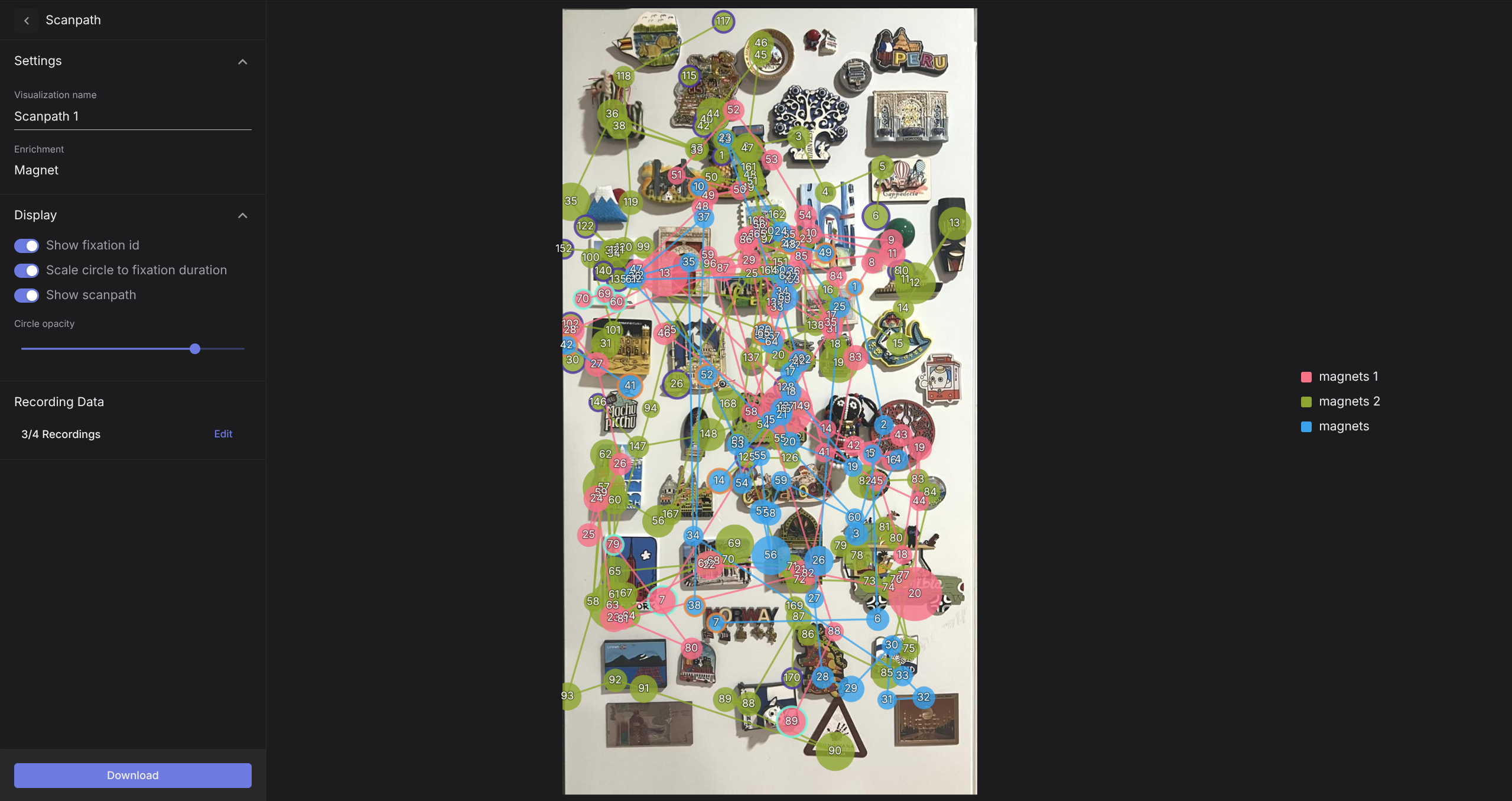Scanpath
The output of the Reference Image Mapper, Marker Mapper, and Manual Mapper enrichments can be visualized as a scanpath over the reference image or surface.
A scanpath is a graphical representation of fixations over time, showing how a participant’s visual attention moves across a scene. Scanpaths are a great tool for analyzing visual attention and perception, as they reveal which parts of a scene attracted focus and in what order.
- Fixation locations - Visualised as numbered circles.
- Fixation durations - Mapped to the size of the circles. Longer fixations correspond to larger circles.
- First and final fixations - Marked with a colored border.
- Saccades - Represented by lines connecting sequential fixations. Saccade distances between sequential fixations are reflected by the length of the lines. Longer lines correspond to bigger gaze shifts. Note this assumes a task without smooth pursuit movements.

Setup
To visualize your scanpath:
- Navigate to the
Visualizationstab. - Click on
Create Visualization. - Select
Scanpathand the enrichment to which it should be applied.
The following configuration options are available for customizing the scanpath visualization:
- Show Fixation ID — Displays fixation IDs next to each fixation when enabled.
- Scale Circle to Fixation Duration — Adjusts the size of fixation circles based on fixation duration. Larger circles represent longer fixations. When disabled, all circles are displayed at the same size.
- Show Scanpath — Draws lines connecting consecutive fixations to visualize the scanpath.
- Circle Opacity — Use the opacity bar to adjust the transparency of the fixation circles.
Additionally, within the Scanpath view, you can select which recordings to include, allowing you to create visualizations for a single recording or combine multiple recordings in one overview.
TIP
Only fixations mapped within the reference image or surface are displayed in the scanpath. Fixations located outside of the image are not shown. As a result, the visualized fixation IDs may not increase sequentially on the image if an observer fixated off and then back on the reference image or surface.
Fixations that are mapped outside the reference image or surface are still connected by the scanpath. The lines will leave the reference image or surface and subsquently return. If a fixation was not mapped at all, then no scanpath lines will connect them.
Export Format
Through the Visualizations tab, in the Scanpath view, you can download the final visualization displaying the generated scanpath in .png format.